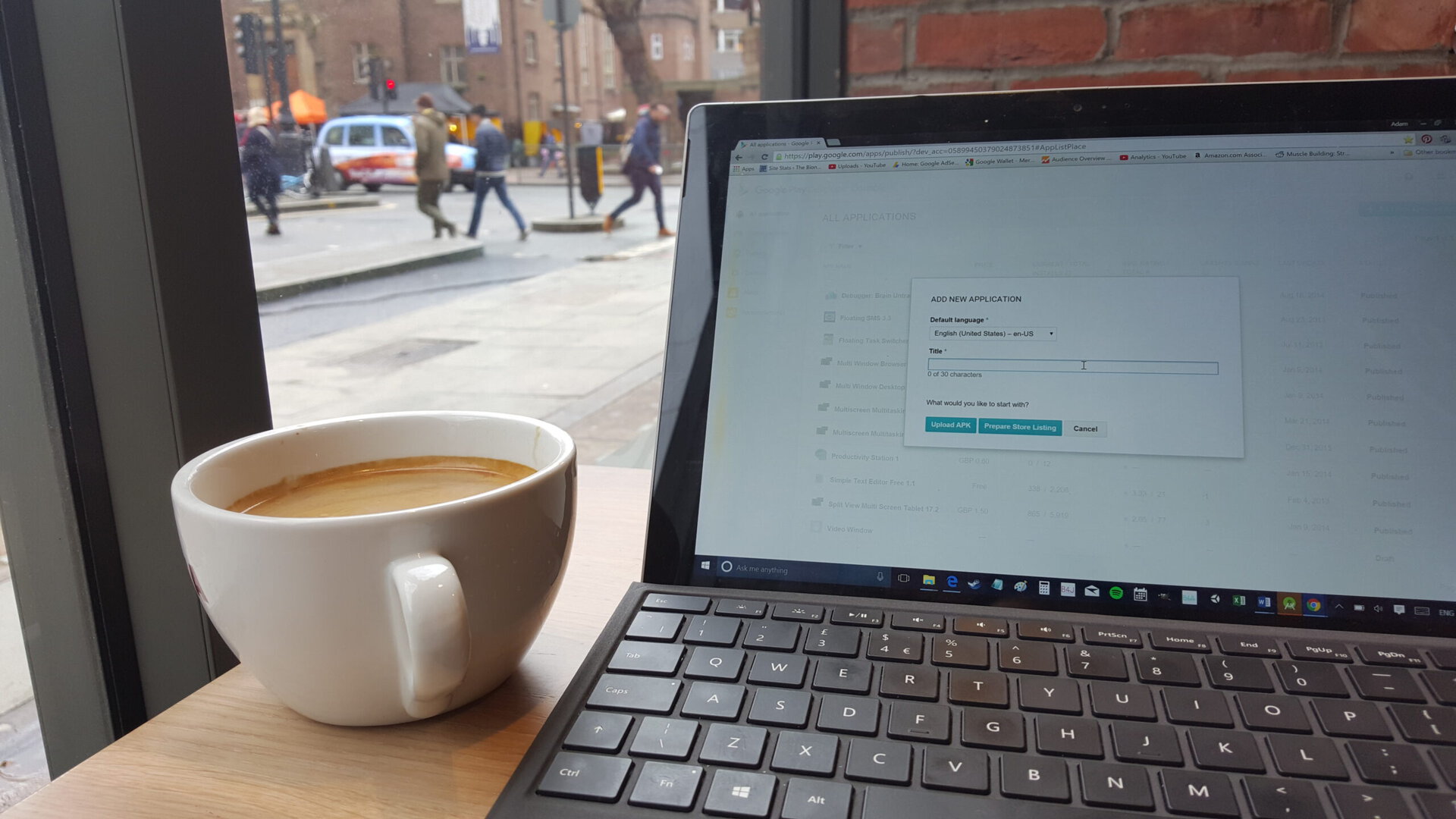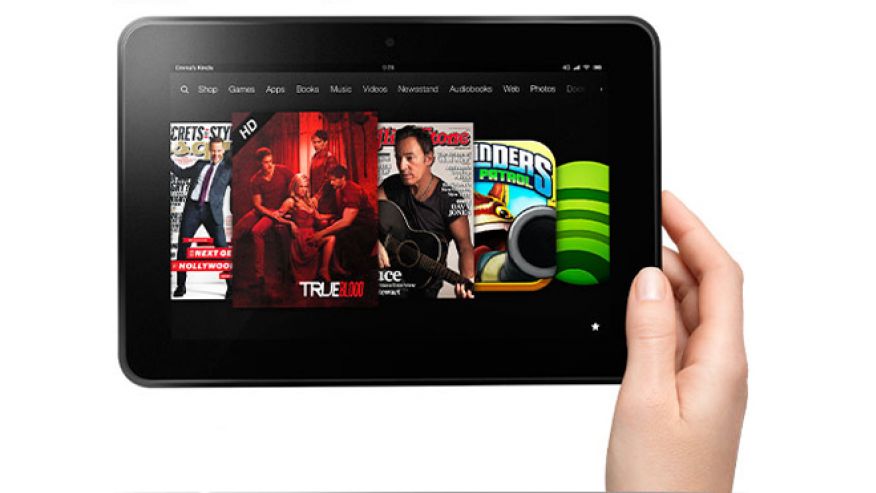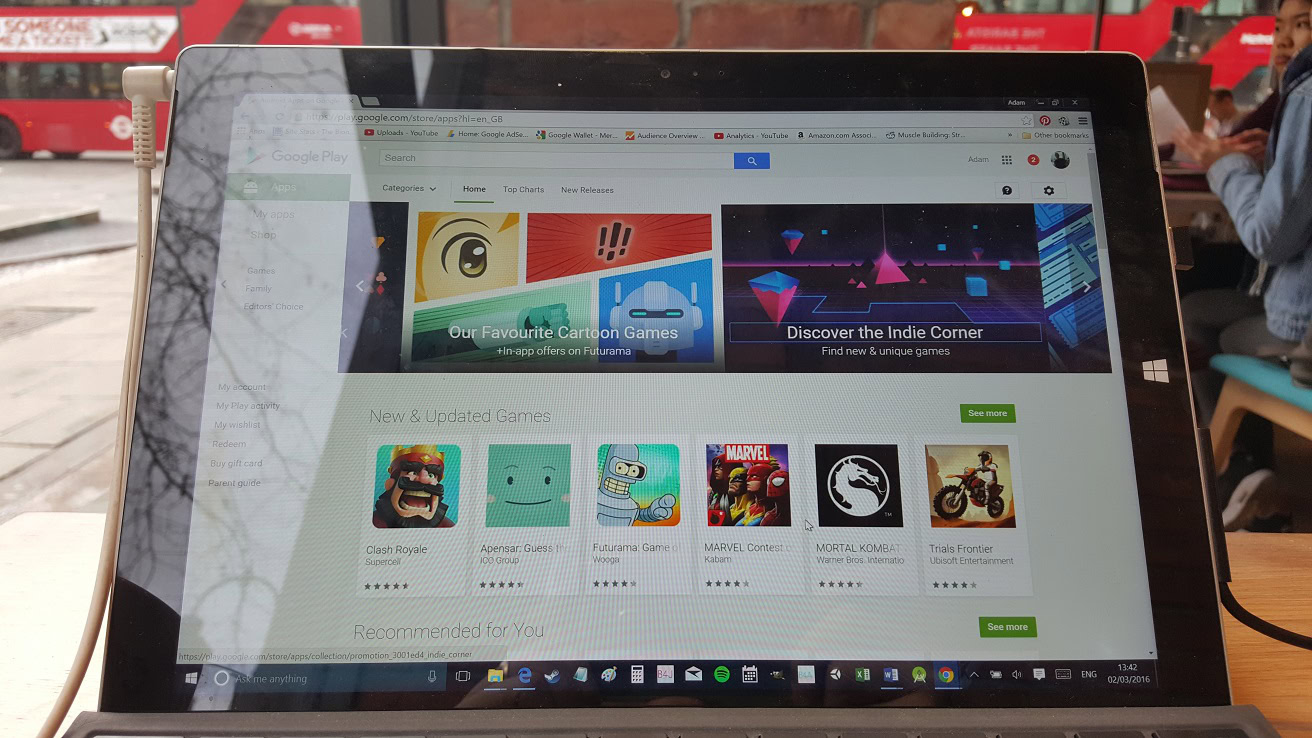Affiliate links on Android Authority may earn us a commission. Learn more.
How to make your Android app stand out and get noticed
March 4, 2016

There was a time when nearly any app you created would get a ton of attention with little-to-no work. All you had to do was come up with an idea, upload the app to the Play Store (which wasn’t called the Play Store back then) and let the downloads come pouring in. And the reason for this was that there just weren’t all that many apps out there to compete with yet. If you created a parkour app, it would probably be the first parkour app. If you created a karate app, it would probably be the first one of those too.
Times have changed though. Today, there are so many apps in the store that it is completely saturated. Release an app without a plan and it will quickly be lost among the crowd. And it doesn’t matter how good the app is either; it could be an app that makes your phone spit out golden nuggets but if no one knows about it, it’s not going to get downloaded.
So the question is: how do you stand out in such a crowded market? How do you make sure you get noticed?
Stop being a little fish in a big pond
One solution is to look for niches and subjects that aren’t overcrowded. Just because most topics that been covered, that doesn’t mean that you can’t still be the first in a few areas. These opportunities still exist, you just need to know where to look.
Not too long ago I created an app for the Oculus Rift. At the time there wasn’t anything out there specifically for the Rift, so it got quite a few downloads with no marketing. Your job is to find a gap in the market, or to anticipate what is up-and-coming and get there before anyone else.
How about a curling app? Or an app offering sewing patterns? These are areas where you might only face a little competition but where you’ll hopefully find there are still enough potentially interested users. It’s a matter of trying to get 80% of a small audience, rather than 1% of a huge one.
It’s a matter of trying to get 80% of a small audience, rather than 1% of a huge one.
Another great way to come up with a niche is to think in terms of careers. Could you create an app that would make your current job easier? I heard of someone who was very successful with an app designed to help with stage lighting. It’s a niche that certainly isn’t over-saturated but the product solved a very distinct problem for a very particular audience.
But what if you want to create a fitness app? What if curling isn’t your thing? That’s fine – but in that case why not try and find a smaller, more specific segment of the market to target? A niche within a niche? A great example might be to create a fitness app aimed at the elderly, or how about an app about a particular type of training program or diet?
This is the exact same strategy that some bloggers use to get noticed. I think ‘Nerd Fitness’ is an excellent of a website with an interesting new niche that still has a very big potential audience.
Finding different platforms
Another way to find a ‘small pond’ is to look for a different platform to release your app on.
The Play Store might be very saturated but there are other stores out there. One example is Amazon’s Appstore but how about trying to get a game into the Humble Bundle for games?

Targeting different platforms is also generally a good move. That might mean creating Android Wear apps, or more virtual reality apps.
While it’s not quite a distribution platform, you might even want to consider launching your app on Kickstarter. Kickstarter is a crowdfunding site that can be used to generate funds for the development of your app. But this is also a just great way to promote your project outside of the Play Store, to potentially get media coverage and to build an active community around it. It can help you generate some real buzz and get off to a flying start once you go to market.
Identifying a ‘route to market’
Once you’ve chosen the subject matter for your app, you should now have a good idea of who your audience is. If you are creating an app about gardening, then that means your audience is probably going to consist of gardeners, people who garden as a hobby and potentially the elder population (not to stereotype!).
That’s your market and that now means that you can identify a route to market in order to promote the product you’re offering directly. This is called ‘go to market strategy’. A route to market is a direct channel you find that will allow you to reach your specific audience.
So for example, that might mean finding a magazine about gardening with a big circulation. If you could get an article in there, then you’d have a means to communicate directly with the audience for your app. Another route to market by be a subreddit, or maybe a Google+ community – though of course a feature in a magazine is going to be much more valuable because you won’t be rubbing shoulders with so many other developers and marketers. This is another ‘small pond’.
How do you find routes to market? The advice I always give is to think about your current contacts and connections before you even plan the app.
Think about your current contacts and connections before you even plan the app
Most of us will have some contacts that we can use in order to reach specific audiences. Maybe you happen to be a friends with a writer at Cats Weekly. Maybe your current position at work gives you the means to communicate with key players within the industry? (This is another reason why making an app for a career can be a good strategy.) Maybe you’re very influential on a particular online forum? Or perhaps you are the head of a large social club in your local area.
And if you don’t already have any influential contacts, you can instead research the market and try to find some that would potentially be receptive before you decide to go ahead with your idea. For one of my apps, I worked with a big YouTuber and developed and app for them. There was already a captive audience in this case, so it was practically guaranteed that the app would have an audience and make some sales.
This means you’re now having to think about your marketing and your opportunities before you’ve come up with the app. Instead of creating an app and then trying to find a way to market it, you’re instead looking for opportunities that are open to you and then creating an app to fit that purpose.
Diversification and ‘horizontal distribution’
An alternative strategy to trying to get 1,000 downloads for your app, is to try and get one download for 1,000 apps.
And you can do this while still promoting essentially the same piece of software by tweaking it in small ways. This is called ‘horizontal distribution’ and an might be if a teaching company were to create lots of different apps for each of its courses. So with the same basic code, it would be able to have high ranking apps in a vast range of categories, from programming, to business, to whatever else. They’d this way greatly increase their chances of being discovered that way and multiply their profits several times over. Likewise, you might make a ‘lifehacks’ app but then make one for wedding planning, one for cooking etc.
Of course you don’t necessarily have to make a thousand versions. But just creating a couple of spin-offs might help you to create some more marketing opportunities for yourself.
You can even make this part of a slow ‘roll out’. Target a small niche with your app and then use that initial success to springboard a move into a bigger category. Facebook did this when it initially launched as a social network for Harvard students only and then gradually expanded to invite more and more users. This way, the site could establish itself early on and then grow as it gathered more momentum.

Unique aesthetics
In a crowd of sheep, it’s the black one that stands out. That’s the sheep that has unique aesthetics and is arguably the most marketable sheep…
This is a strategy that indie game developers use all the time. Just take a look at something like Limbo. Limbo is a game that catches your eye the moment you look at it thanks to the monochrome graphics, beautiful animations and liberal use of silhouettes.

The same can be said for Super Hexagon which is as awesome to watch as it is to play, and Geometry Wars 3 which is one of the most colourful and hectic games for the platform. You can also see the strategy working in apps that use a lot of material design, with neon aesthetics or that otherwise catch the eye.
Lots of Android users casually browse the app store from time to time in search of new things to download and your job is to make your offering look so interesting that they’re compelled to check it out.
The same also goes for the icon that shows next to the listing (the 512×512 hi-res icon) and what’s equally as important in this case is that you reflect what it is that your app does/is about. For example, if your app is a retro platformer, then using pixel art is a great way to communicate that and to attract the right audience. For one of my apps, I simply used a screenshot of my app as the icon as that there was no confusion as to what it did.
Think too about other ways that your app’s icon could stand out. What might pique the curiosity of a potential user? What would provide the most contrast in a sea of similar icons? How can you be that black sheep?
SEO and thinking about search
SEO stands for ‘Search Engine Optimization’ and is one of the biggest aspects of internet marketing. Usually, this term refers to the techniques that businesses and webmasters use to try and get their websites to ‘rank’ on Google for particular search strings. A hat shop for instance might try to get on the first page of Google for the term ‘buy hats online’. But SEO can also apply to any other type of search engine, be that Bing, YouTube or the Play Store.
The basic strategy here is to think about what people will search for when they’re looking for your app and then using that term in the content of your store listing. I once made a game and wrote in the description that it was ‘like Super Meat Boy’ which was enough to generate a large amount of downloads. Again, the key here is to think about what people are searching for and what isn’t already being provided.

Perhaps the most influential factor in this regard is the name of your app. You can come up with a fancy brand name like ‘Art Splash!’ if you want, but it’s going to be ten times harder to market than ‘My Coloring App’ because it a) won’t come up in searches and b) no one will know what it does.
(Oh and don’t try to ‘beat the system’ by using multiple repetitions of the search phrase you want throughout your text. Your app will look like spam and you’ll probably get penalized.)
Traditional Marketing
Finally, you can get your app noticed by simply marketing it and using the same strategies used by websites and ecommerce stores.
That means:
- Creating a website or blog and building your own audience
- Paying for advertising (look into Facebook Ads or Google AdSense)
- Creating a video (for YouTube and for your app’s listing)
- Writing ‘guest posts’ for blogs (free content that you provide in exchange for a link to your app)
- Contacting relevant blogs and magazines with a press release
The more time, effort and money you pour into your marketing, the more you will eventually get out of it. Just make sure that you always keep ROI (return on investment) in mind. If your app sells for 50 cents, then you’re going to need to get an awful lot of downloads to make a $1,000 ad spend worthwhile!
Just because it’s a good idea, that doesn’t mean it’s marketable
This is a topic that I might cover more in future, so give a shout if that’s something you’d be interested in.
Closing comments
If you just want to make an app for yourself because you think it’s a great idea and a bit of fun, then you don’t need to worry about any of this. And if you’re very lucky, your app could still be a hit. While it’s rare, word of mouth and a little luck can still create massive hits like Flappy Bird.
But if you don’t want to leave anything to chance and if you want this to be your living, then you need to be a little strategic about how you go ahead. And that starts from the very inception of your app idea. Just because it’s a good idea, that doesn’t mean it’s marketable and doesn’t mean that you personally have the right connections to market it.
Thank you for being part of our community. Read our Comment Policy before posting.